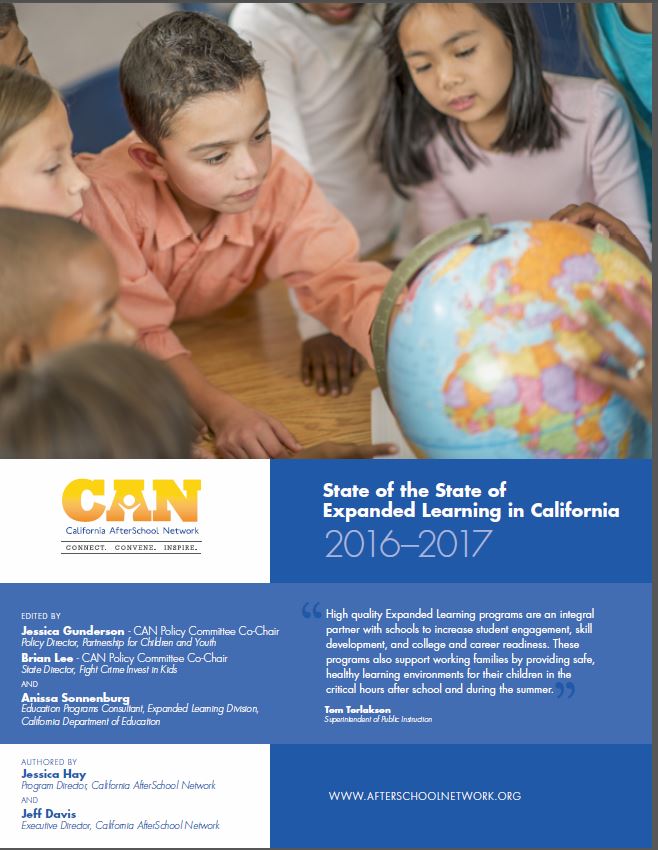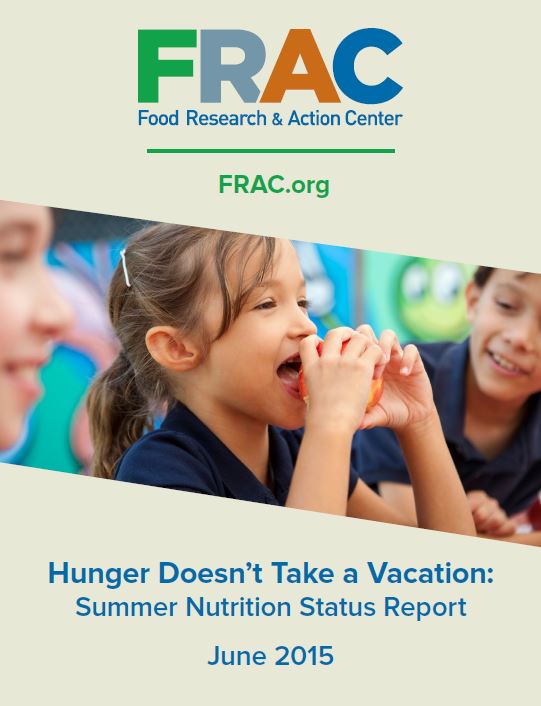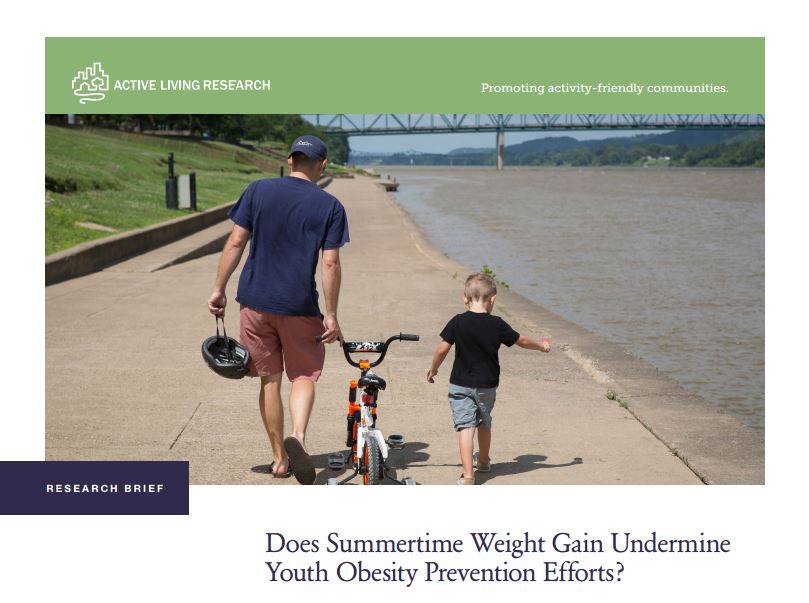Research
2017
The State of the State of Expanded Learning in California 2016-2017 provides an overview of the public investment in expanded learning opportunities in California. This year’s report outlines that expanded learning programs provide after school and summer learning opportunities to nearly 860,000 of California’s students with the greatest needs through over 4,500 expanded learning programs. Read it here.
The State of the State of Expanded Learning in California 2016-2017 provides an overview of the public investment in expanded learning opportunities in California. This year’s report outlines that expanded learning programs provide after school and summer learning opportunities to nearly 860,000 of California’s students with the greatest needs through over 4,500 expanded learning programs. Read it here.
August 2015
According to a study from the CDC, "The percentage of schools implementing practices to increase availability of fruits and vegetables and decrease sodium content in school meals increased from 2000 to 2014". Read more here.
According to a study from the CDC, "The percentage of schools implementing practices to increase availability of fruits and vegetables and decrease sodium content in school meals increased from 2000 to 2014". Read more here.
June 2015
Increasing participation in the federal Summer Nutrition Programs—the Summer Food Service Program (SFSP) and the National School Lunch Program (NSLP)—is critical to ensure the health and well-being of low-income children. During July 2014, the Summer Nutrition Programs served nearly 3.2 million children, an increase of 7.3% over 2013. See the report here.
Increasing participation in the federal Summer Nutrition Programs—the Summer Food Service Program (SFSP) and the National School Lunch Program (NSLP)—is critical to ensure the health and well-being of low-income children. During July 2014, the Summer Nutrition Programs served nearly 3.2 million children, an increase of 7.3% over 2013. See the report here.
May 2015
Children gain up to three times as much weight during the summer compared to the entire school year, according to this research brief from Active Living Research. The authors recommend that healthy eating and physical activity standards be implemented in summer programs. Read more here.
Children gain up to three times as much weight during the summer compared to the entire school year, according to this research brief from Active Living Research. The authors recommend that healthy eating and physical activity standards be implemented in summer programs. Read more here.
May 2015
This report, which examines the economic impact of increasing participation in the federal School Breakfast Program among California students, shows that a 10% expansion would generate $42.7 million in economic activity while creating nearly 1,000 new jobs. Read more here.
This report, which examines the economic impact of increasing participation in the federal School Breakfast Program among California students, shows that a 10% expansion would generate $42.7 million in economic activity while creating nearly 1,000 new jobs. Read more here.
March 2015
The America After 3PM special report, "Kids on the Move: Afterschool Programs Promoting Healthy Eating and Physical Activity" concentrates on parents' reports of efforts made by afterschool programs to help improve the health and physical fitness of children and youth around the country; describes areas where afterschool programs can better meet the needs of students and families when it comes to health and wellness; and outlines steps we can take as a nation to help make positive change for students' overall health.
Reducing Childhood Obesity through U.S. Federal Policy
November 2014A microsimulation analysis published in the American Journal of Preventive Medicine estimated the impact of three policies to reduce childhood obesity and found that afterschool physical activity programs would reduce obesity the most among children aged 6-12 years. See the report summary here.












